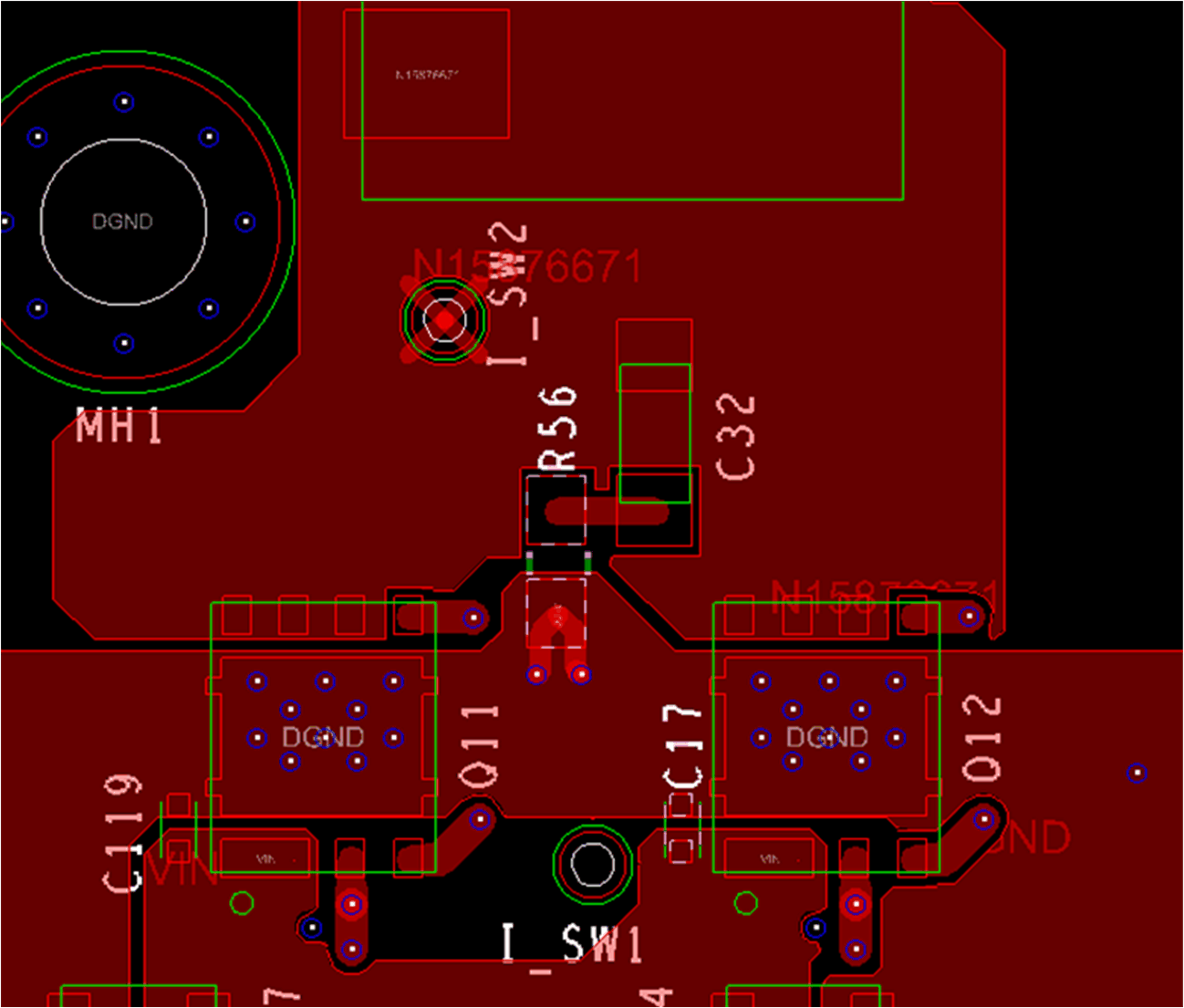DLPS132 May 2018 DLPA4000
PRODUCTION DATA.
- 1 Features
- 2 Applications
- 3 Description
- 4 Revision History
- 5 Pin Configuration and Functions
- 6 Specifications
-
7 Detailed Description
- 7.1 Overview
- 7.2 Functional Block Description
- 7.3
Feature Description
- 7.3.1 Supply and Monitoring
- 7.3.2 Illumination
- 7.3.3 External Power MOSFET Selection
- 7.3.4 DMD Supplies
- 7.3.5 Buck Converters
- 7.3.6 Auxiliary LDOs
- 7.3.7 Measurement System
- 7.4 Device Functional Modes
- 7.5 Programming
- 7.6 Register Maps
- 8 Application and Implementation
- 9 Power Supply Recommendations
- 10Layout
- 11Device and Documentation Support
- 12Mechanical, Packaging, and Orderable Information
Package Options
Mechanical Data (Package|Pins)
- PFD|100
Thermal pad, mechanical data (Package|Pins)
- PFD|100
Orderable Information
10.1.1.4 RC Snubber
Proper operation requires snubber networks. The switching frequency can vary from several hundreds of kHz to frequencies in the MHz range. To switch currents from zero to several amperes requires only nanoseconds, equivalent to even much higher frequencies. EMI can occur when ringing occurs on the edges. This ringing can have higher amplitude and frequency than the switching voltage. All DLP4000 buck converters require a snubber network to prevent ringing. The snubber network comprises a resistor and a capacitor in series.
Place an R-C snubber network (C32 and R56) to reduce ringing on the switching node. Place the capacitor on top of a large plane for the switching node directly next to the PGND plane. This resistor placement eliminates the gap between the switching node and the PGND plane used by the PowerBlocks.
 Figure 29. RC Snubber Layout
Figure 29. RC Snubber Layout